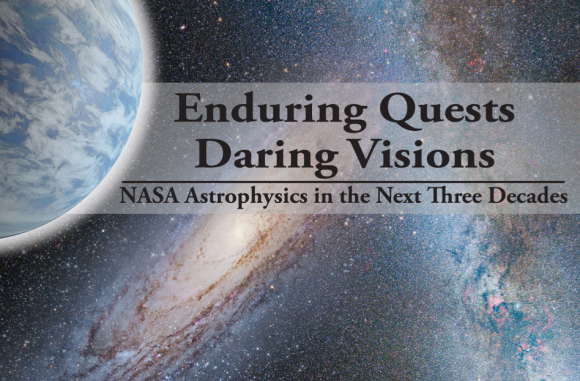

| Visitors Now: | |
| Total Visits: | |
| Total Stories: |

| Story Views | |
| Now: | |
| Last Hour: | |
| Last 24 Hours: | |
| Total: | |
Enduring Quests and Daring Visions: NASA Lays Out a Roadmap for Astrophysics

An artist’s concept of Kepler-69c, a super-Earth in the habitable zone of a sun-like star, in front of an illustration of the predicted collision between the Andromeda and Milky Way galaxy. Image Credit: NASA 2014
Three decades ago we were unaware that exoplanets circled other stars. We had just started talking about dark matter but remained blissfully ignorant of dark energy. The Hubble Space Telescope was still on the drawing board and our understanding of the life cycle of stars, the evolution of galaxies, and the history of the Universe was shaky.
But over the past three decades we have discovered thousands of exoplanets around other stars. We have mapped the life cycle of stars from their formation in beautiful stellar nurseries to their sometimes explosive deaths. We have seen deep into the history of the Universe allowing us to paint a picture of galaxies growing from mere shreds to the incredible spiral structures we see today. We now believe dark matter dominates the underlying framework of the Universe, while dark energy drives its accelerating expansion.
The amount of growth over the past three decades has been dramatic. To better access what the next three decades will bring, NASA has laid out a roadmap — a long-term vision for future missions — necessary to advance our understanding of the Universe.
(…)
Read the rest of Enduring Quests and Daring Visions: NASA Lays Out a Roadmap for Astrophysics (824 words)
© Shannon Hall for Universe Today, 2014. |
Permalink |
No comment |
Post tags: astrophysics, NASA, NASA Budget
Feed enhanced by Better Feed from Ozh
Source: http://www.universetoday.com/108227/enduring-quests-and-daring-visions-nasa-lays-out-a-roadmap-for-astrophysics/


